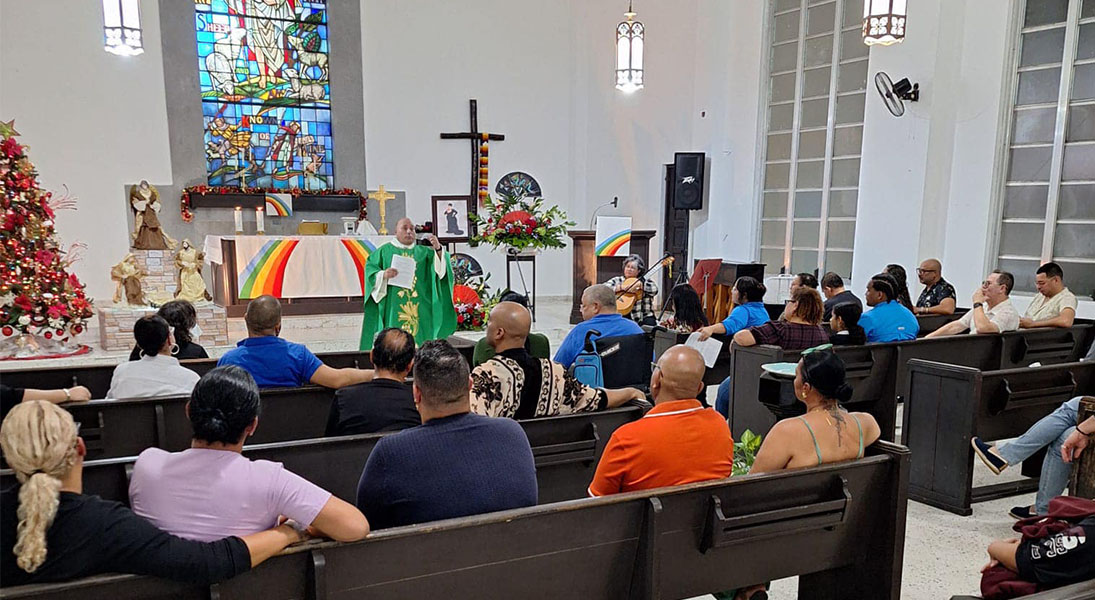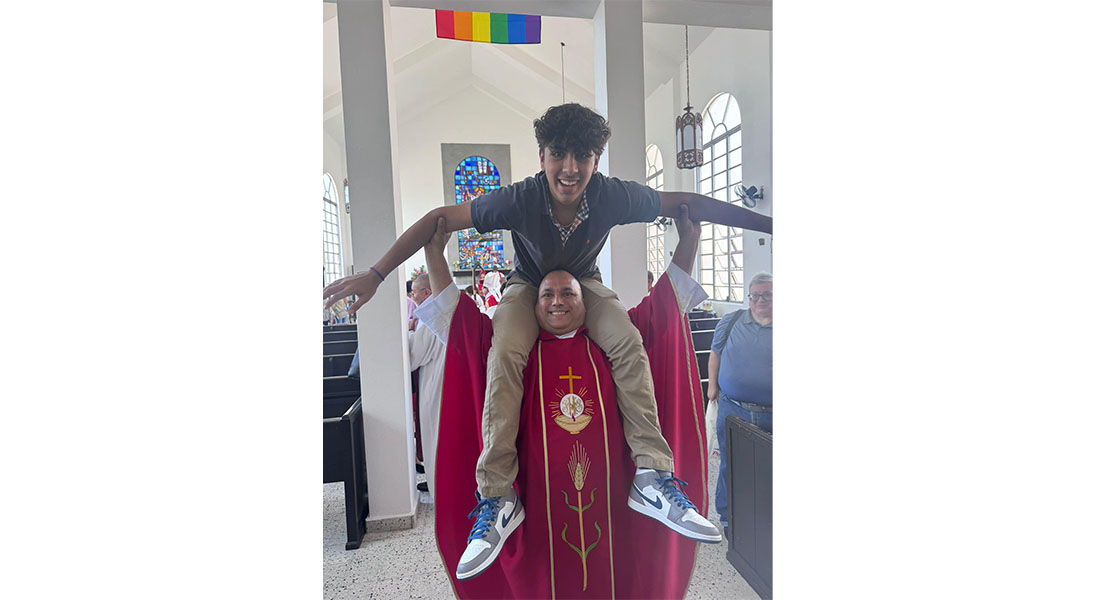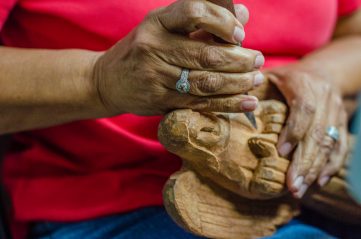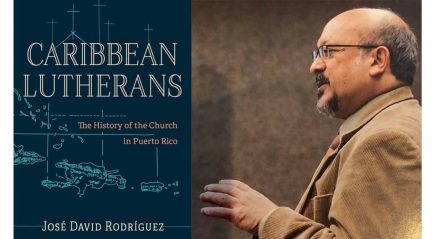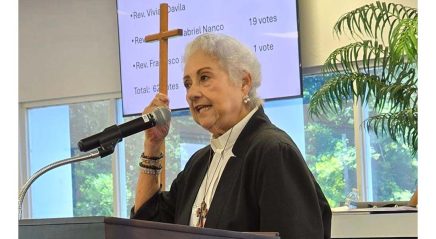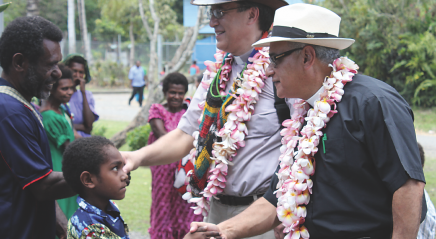Nuestro Casa para Todos—which means “Our House for All”—is a new ELCA ministry serving students and neighbors of the University of Puerto Rico in Río Piedras.
In March 2023, Nuestro Casa para Todos began worship services for the community. In September of that year, it launched a ministry to accompany and serve the university community. The Caribbean Synod tried to do something new by renovating a former church building that sat empty near the campus. The ministry began to take shape when a newly ordained pastor arrived and invited students to hang out.
Soon the students began meeting at the church on Tuesday nights to dine, talk, study, play music and have fellowship. The fellowship program was so successful that Nuestro Casa para Todos added new activities and services as the next step to becoming an inclusive
faith community.
Living Lutheran asked Nuestra Casa’s pastor, Ignacio Estrada, a Cuban native who was ordained in April, to tell us about the ministry.
Living Lutheran: Please share your background and ordination story.
Estrada: I arrived in the United States in November 2013 with a suitcase full of dreams. Accompanied by my wife, Wendy, we left behind our home and family for Miami, where I was a ministry developer while studying at seminary.
When I came to Puerto Rico in February 2023, I expected to stay for a nine-month internship. After the internship [concluded], I decided to serve here, responding to a call from God. I was ordained on this island, which I love as my second homeland.
How did the church get started?
The building was shared with the Episcopal Church Diocese of Puerto Rico, but [it had been] closed for the past few years. Neighbors had beautiful memories of weddings, baptisms and communions at the church, and they longed for those times. A vision of a relaunched church began to be forged.
I did not accept any money for planting this ministry. I did it with love and gratitude—first to God, second to the church and third to the local people who opened their hearts and welcomed me.
How was an empty building transformed into a church?
Members of synod churches, ELCA pastors, the community and students volunteered to help with the renovations, which included waterproofing, painting, adding security measures and electrical repairs. When God sends, he provides.
Are there other churches or ministries on campus?
Accompanying ministries on campus meet specific needs, but none like ours. Most are only open during the day, while we’re available from 6 p.m. until midnight.
We serve dinner that is made in our kitchen by volunteers for the students, who hang out to study, talk, play board games and enjoy music.
Our ministry is a safe space without exclusion, where our faith is unconditional and shared without judgment. Students find hands willing to serve, ears willing to listen and a church available to accompany them.
About 30 to 80 students gather on Tuesdays.
What is the church’s mission?
We are a bridge of grace between God and a young population that is often distanced from the church because of how God has been presented to them. We provide a safe and inclusive space. Our mission also presents young people with a church that embodies Jesus, who is made present through the work of God in our hands.
We are a growing ministry. We serve, but we also proclaim the word and celebrate the eucharist. We accompany the university community and every person who needs the church.
What is happening here is the fruit of a willingness to listen to God’s call.
How does the church serve the community?
We provide space for community discussions, workshops and meetings. We provide aid to the immigrant community and those in need, and accompany [older adults] and mothers in emergency situations. We minister to the LGBTQ+ community. Our work is promising and is done with love and commitment.
Please describe the worship services at your church.
Worship ranges from a liturgical service to contemporary. The liturgy we use is Lutheran, and we always include new enriching elements. We share the word and sacrament weekly. We recently had our first baptism.
Services are attended by 12 to 25 people, mostly neighbors and community members. On weekends, students return home, but they have joined in special moments and collaborations with the church.
Why is this type of ministry important?
Our ministry plays an important role in student well-being. We support their academic success, and their emotional, physical and social well-being.
It is important that the church cares about the well-being of students and participates in creating an environment that is conducive to learning and happiness. We provide a safe space that promotes dialogue with respect, creates networks and highlights the work of God.
We serve, accompany, listen and restore the trust that many students have lost in the church, and [as a result] have distanced themselves from God.
What kinds of activities do you facilitate?
We discuss topics of interest to the university; provide academic support to disadvantaged students; facilitate space for interreligious dialogue; foster inclusion; sponsor health promotion activities, including free HIV tests; and more.
We also have on hand canned food, personal hygiene items and basic necessities that people may need.
We promote prayer and keep our space open for intimacy with God. Students seek counseling, spend time in prayer or silence, sit and talk with friends in the pews and make music.
Last year the young people set up a Christmas tree and decorated the church.
What does the future hold for this ministry?
This is an important moment in which the church has left its comfort zone and is writing a new history, accepting the historical challenges that students experience. This ministry keeps me hopeful and is enriching. I know we’re doing the right thing in responding to the needs of people who live on the margins.




